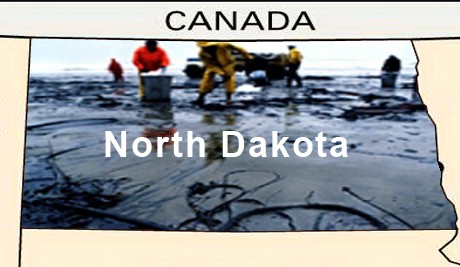CCST Report: Fracking pollution poses major risks
[Editor: Two contrasting reports on a recent California Council on Science and Technology report. – RS]
Repost from The Center for Biological Diversity
New Study: Fracking Pollution Poses Major Threat to California’s Air, Water
Scientists’ Warnings Come Too Late to Shape State’s Weak Fracking Regulations
July 15, 2015 SACRAMENTO, Calif.— A study released today by the California Council on Science and Technology warns that fracking and other oil extraction techniques emit dangerous air pollution and threaten to contaminate California’s drinking water supplies. Millions of Californians live near active oil and gas wells, which exposes them to the air pollutants indentified in the report.The troubling findings come a week after Gov. Jerry Brown’s oil officials finalized new fracking regulations that do little to address such public health and water pollution risks.
“This disturbing study exposes fatal flaws in Gov. Brown’s weak fracking rules,” said Hollin Kretzmann of the Center for Biological Diversity. “Oil companies are fouling the air we breathe and using toxic chemicals that endanger our dwindling drinking water. The millions of people near these polluting wells need an immediate halt to fracking and other dangerous oil company practices.”
Last week the state’s Department of Conservation began implementing new fracking regulations and finalized an assessment of fracking’s health and environmental risks, even though the science council had not finished evaluating fracking’s dangers. The science council is an independent, nonprofit organization that advises California officials on policy issues.
Today’s report concludes that fracking in California happens at unusually shallow depths, dangerously close to underground drinking water supplies, with unusually high chemical concentrations. That poses a serious threat to aquifers during the worst drought in California history.
Air pollution is also a major concern. In the Los Angeles area, the report identifies 1.7 million people — and hundreds of daycare facilities, schools and retirement homes — within one mile of an active oil or gas well. Atmospheric concentrations of pollutants near these oil production sites “can present risks to human health,” the study says.
But Gov. Brown’s new fracking regulations do not address deadly air pollutants like particulate matter and air toxic chemicals. A recent Center analysis found that oil companies engaged in extreme oil production methods have used millions of pounds of air toxics in the Los Angeles Basin.
Among the science council’s other disturbing findings:
- California places no limits on how close oil and gas wells can be to homes, schools or daycare facilities, which can expose people to dangerous air pollution from fracking and other oil extraction procedures.
- Serious concerns are raised over the oil industry’s disposal of fracking waste fluid and produced water into open pits and the use of oil waste fluid to irrigate crops.
- The health and water pollution impacts of fracking chemicals that could be present in oil waste that’s dumped into open pits “would be extremely difficult to predict, because there are so many possible chemicals, and the environmental profiles of many of them are unmeasured.”
- Wildlife habitat can be fragmented or lost because of fracking and other oil development – and fracking-related oil development in California “coincides with ecologically sensitive areas” in Kern and Ventura Counties.
- Confirmation that many oil industry wastewater injection wells are close to active faults — a practice has triggered earthquakes in other states. The science council identified more than 1,000 active injection wells within 1.5 miles of a mapped active fault — and more than 150 are within 656 feet.
Contact: Clare Lakewood, (510) 844-7121, clakewood@biologicaldiversity.org
The Center for Biological Diversity is a national, nonprofit conservation organization with more than 900,000 members and online activists dedicated to the protection of endangered species and wild places.
The Center for Biological Diversity is a national, nonprofit conservation organization with more than 900,000 members and online activists dedicated to the protection of endangered species and wild places.
Repost from Public News Service
Report: Fracking Risk to CA is Aquifer Contamination, Not Quakes
By Suzanne Potter, July 10, 2015
PHOTO:
A hydraulic fracturing well in Kern County. The safety of fracking is
the subject of a new report. Photo credit: California Council on Science
and Technology.
SACRAMENTO, Calif – A new report says hydraulic fracturing can contaminate groundwater when the excess water is not properly disposed of, but is not linked to earthquakes in California.
In January, a study by the Seismological Society of America linked a series of earthquakes in Ohio to fracking, and there have been similar claims in other states as well.
The new study released Thursday comes from the California Council on Science and Technology and the Lawrence Berkeley National Laboratory. Jane Long, the lead scientific researcher, says hydraulic fracturing poses some safety concerns but they’re manageable.
“A lot of things people were concerned about are things that are not as big a problem as they think they are,” says Long. “And some of the practices are things that need to change and need more attention.”
The report says the oil companies should phase out percolation ponds used to dispose of excess water because toxic fracking chemicals can get into the aquifer. And it recommends companies put aside about a third of the chemicals currently in use because there’s not enough data about them.
The Center for Biological Diversity points to the finding that oil operations can pollute the air in their immediate vicinity. Long is optimistic that the report will spur further reforms.
“Some of them are going to be recommendations that will be very easy to act on right away and I think they will be acted on and some of them are going to require some process,” she says.
The report was required by the 2013 passage of State Senate Bill 4, which established new safety measures for fracking, rules that went into effect on July 1.




